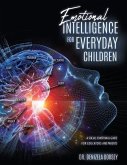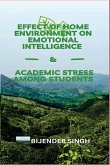Adolescence is a time of transition in which biological and cognitive growth accompany by changes in family relationship and interaction with external environment (Dumont & Provost, 1999; Ebata et al., 1990) and a critical stage in individual's life when interactions with the environment have a good or bad impact on well-being and shapes adult behavior (Call et al., 2002). As well, an unconscious consideration of reproductive advantages, parental care is not evenly distributed among siblings, but rather U-shaped, with first and last born siblings receiving more attention than middle born siblings (Salmon, 2003). Furthermore, due to competition between siblings for parental investment, children assume family roles associated with birth order (Sulloway, 2007). As well as, middle-born prefer non-familial social contacts to familial ones and acquire more sophisticated social skills than first and last born (Keller & Chasiotis, 2007). So that the present study planed for particularly temperament as a predictor of resilience, emotional intelligence, and self-esteem among young adults of Haryana and Uttarakhand (India), in addition, focuses on the 18 to 22 year old population because it is a key phase of biological, cognitive and social transformation. Individual interactions with the external environment at this time can have long-term consequences for well-being and adaptability. First, at this age, vulnerability of psychopathology is a concern. Second, gender and birth-related differences in temperament investigated since Indian adolescents have a high prevalence of emotional and behavioral disorders. Family, societal and parenting practices, all impacted by society, as are values, beliefs and attitudes regarding children and adolescent growth, well-being and pathology, as well as theoretically relevant determinants of temperament. For the fulfillment of the objective of the study.







